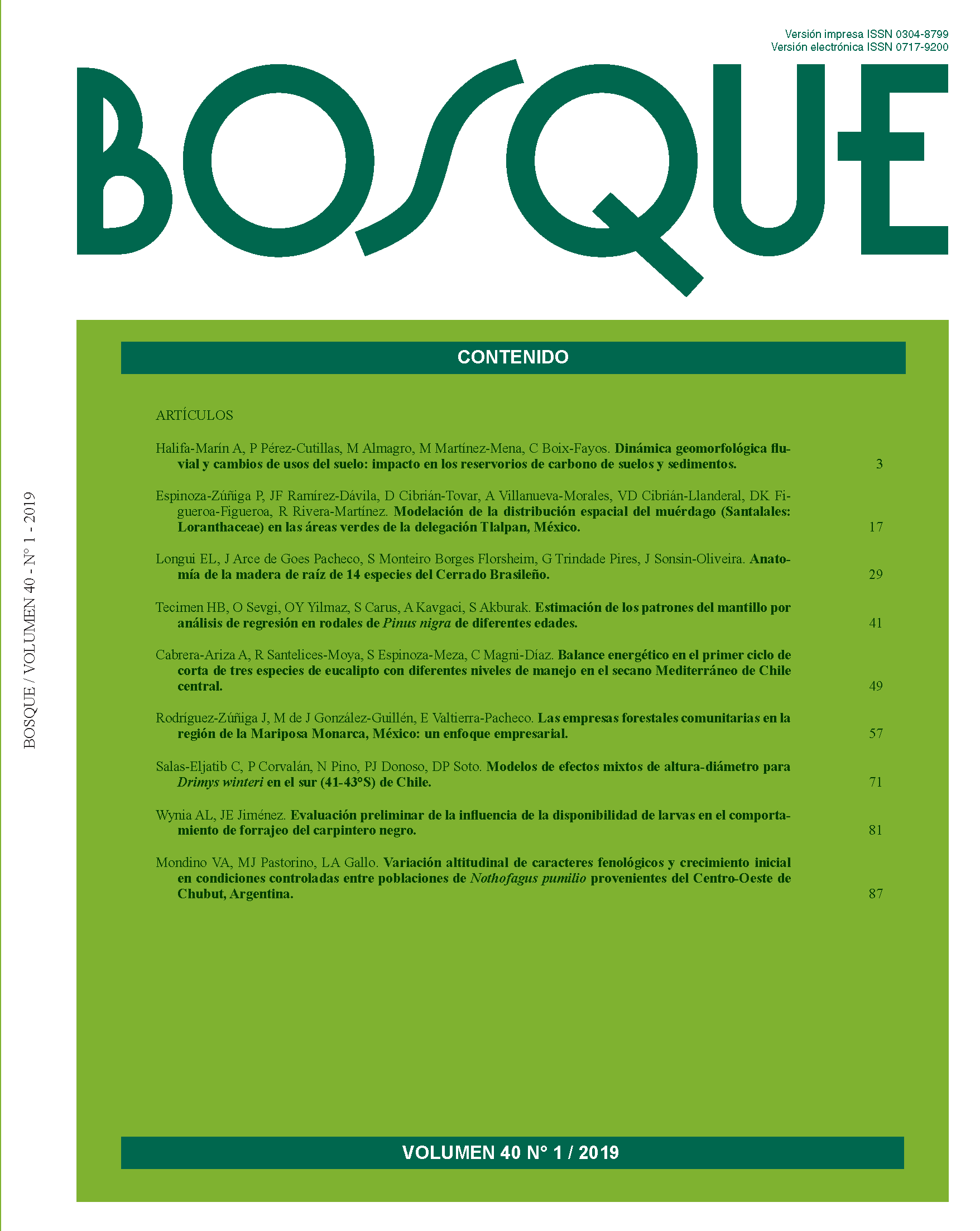Modelos de efectos mixtos de altura-diámetro para Drimys winteri en el sur (41-43° S) de Chile
Contenido principal del artículo
Resumen
Drimys winteri es una especie muy abundante en los bosques naturales de Chile, conformando bosques secundarios de alto rendimiento entre las latitudes 41° y 43° S. La relación altura-diámetro es clave para realizar estimaciones de volumen, biomasa, y para entender características autoecológicas de las especies forestales. Sin embargo, esta relación alométrica ha sido poco investigada para esta especie. El objetivo del presente estudio fue modelar la relación altura-diámetro de D. winteri mediante modelos no-lineales de efectos mixtos. Se empleó una amplia base muestral de árboles entre las provincias de Llanquihue y Chiloé en el sur de Chile. Se analizaron diferentes modelos, y posteriormente se evaluó a qué parámetro(s) agregar efectos aleatorios. Finalmente, se modelaron dichos efectos en función de variables agregadas de rodal (e.g., densidad, área basal). Se propone un modelo que: posee un comportamiento biológicamente consistente; sus parámetros son estimados de forma eficiente al considerar la estructura jerárquica de los datos; e incluye el efecto de la competencia (representado por la densidad y diámetro del árbol de área basal media) y la calidad del sitio (representado por el incremento medio anual en altura dominante) de los bosques donde estos árboles crecen. Esto implica que la alometría altura-diámetro de D. winteri varía dependiendo de la competencia y productividad del sitio donde crece la especie, dos variables fundamentales de considerar en la toma de decisiones silvícolas.

